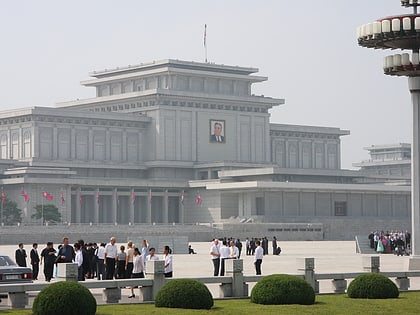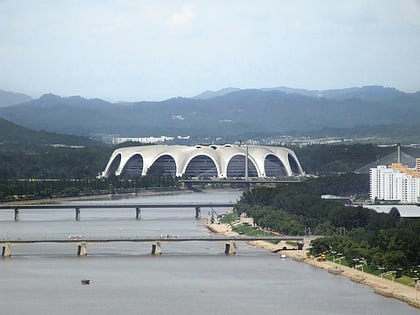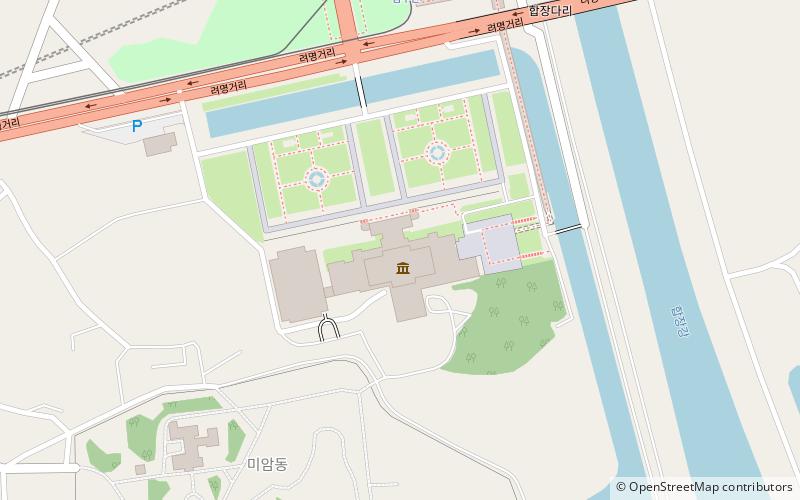Kumsusan Palace of the Sun, Pyongyang
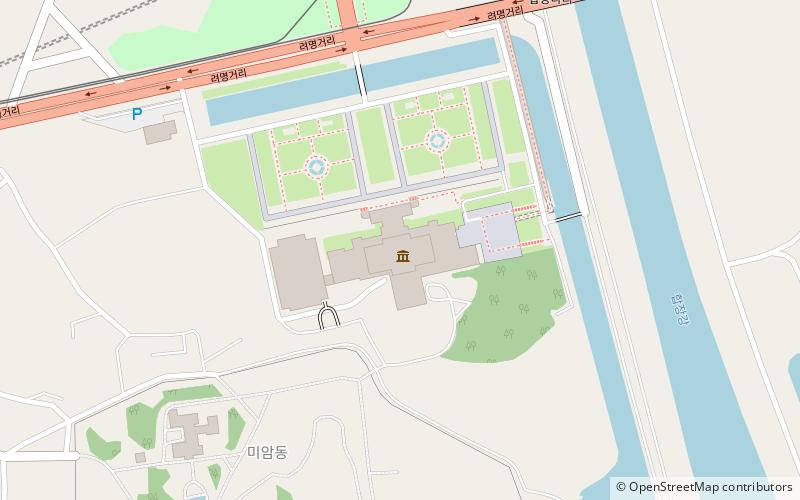
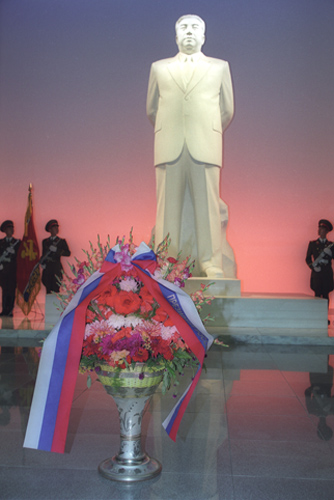
Facts and practical information
The Kumsusan Palace of the Sun, formerly known as the Kumsusan Memorial Palace, is a grandiose mausoleum in the heart of Pyongyang, North Korea. It is the final resting place of the country's founding father, Kim Il-sung, and his son and successor, Kim Jong-il. The palace serves as a prominent symbol of reverence and memorialization in the hermit kingdom.
Originally built in 1976 as the Kumsusan Assembly Hall, the structure was converted into a mausoleum following the death of Kim Il-sung in 1994. It was later expanded to include the body of Kim Jong-il after his demise in 2011. The palace is an imposing example of North Korean monumental architecture, combining traditional Korean motifs with socialist realism.
Spanning an area of 250,000 square meters, the Kumsusan Palace of the Sun is one of the largest mausoleums in the world. The structure is noted for its extensive use of marble and the meticulous preservation of the leaders' bodies, which are displayed in clear glass sarcophagi. The palace complex includes a series of halls and rooms dedicated to the life and works of the two leaders, adorned with their statues and personal artifacts.
Access to the Kumsusan Palace of the Sun is highly controlled, and it is only open to visitors on Thursdays and Sundays. Foreigners permitted entry must adhere to strict dress codes and protocols, reflecting the site's significance in North Korean culture and politics. Photography inside the palace is strictly prohibited.
Kumsusan Palace of the Sun – popular in the area (distance from the attraction)
Nearby attractions include: Rungrado 1st of May Stadium, Yodok concentration camp, Taesong-guyok, Kim Il-sung University.
Frequently Asked Questions (FAQ)
How to get to Kumsusan Palace of the Sun by public transport?
Tram
- Kumsusan (9 min walk)
Train
- Samhung (29 min walk)
Metro
- Samhung • Lines: 2 (29 min walk)
